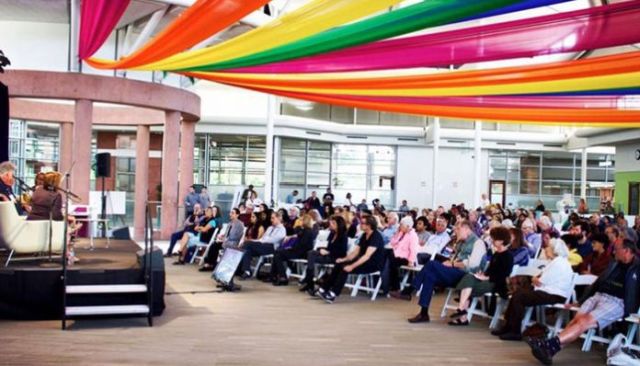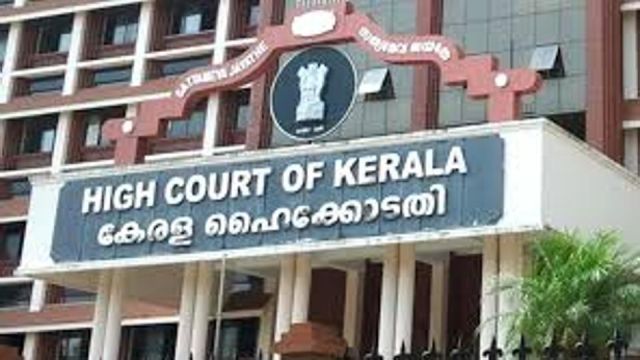
by admin | May 25, 2021 | Media, News
 New Delhi : Journalist associations on Saturday demanded strict action against Delhi Police personal involved in assault and molestation of journalists covering a protest by students and teachers of the Jawaharlal Nehru University (JNU).
New Delhi : Journalist associations on Saturday demanded strict action against Delhi Police personal involved in assault and molestation of journalists covering a protest by students and teachers of the Jawaharlal Nehru University (JNU).
In a letter to Delhi Police Commissioner Amulya Patnaik, the Press Club Of India, the Indian Women’s Press Corps, the Press Association and the Federation of Press Clubs in India said journalists were beaten and molested despite telling police that they are from the media.
Condemning the assault, the associations said two women journalists were roughed up; one of whom was intimidated and threatened by women police officers and even more shockingly, the other journalist was molested by Station House Officer Vidyadhar Singh. A third male journalist has his arm in a sling after being beaten up by policemen.
They said the journalists were physically assaulted as they tried to take pictures of the protest, while police snatched their equipment and did not return it.
“Despite repeated pleas that they were journalists and even furnishing their identity cards, they were not spared.
“We demand that strict action against the police persons involved and the registration of FIRs on the complaints of assault and molestation, both of which have been filed at the respective police stations,” the associations said.
On Friday, JNU teachers and students held a protest march demanding suspension of professor Atul Johri, accused of sexual harassment, and protesting against the removal of some department heads and a coordinator for not complying with the University’s new attendance rules.
As the hundreds of protesting students and teachers from the University marched towards Parliament, the Delhi Police undertook a baton charge and fired water canons on the agitators near the INA Market.
Delhi Police on Saturday tendered their “deepest apologies” for the attack on media personnel when police undertook a baton charge on protesting students, with a senior officer stressing that police did not intend to obstruct the media from doing its job.
—IANS

by admin | May 25, 2021 | Hindi, Markets, Media, News, Social Media
 New Delhi : There is a steep divide in the news preferences of Hindi and English readers online and findings of a survey, announced on Wednesday, show that while nationalistic, religious and political themes attract Hindi readers, the news around entertainment and celebrities find more readers in English.
New Delhi : There is a steep divide in the news preferences of Hindi and English readers online and findings of a survey, announced on Wednesday, show that while nationalistic, religious and political themes attract Hindi readers, the news around entertainment and celebrities find more readers in English.
At the same time, the survey also reveals that sharing on nationalistic and religious themes dominated in 2016, with 22 per cent of the total shares for the “Most Shared 5000 stories,” but dropped significantly to 14 per cent in 2017 for the same number of most shared stories.
The survey — carried out by Storynomics, a consulting firm that specializes in business of storytelling in traditional and digital media — comes after a similar survey in 2017 for the news trends in 2016.
The firm analysed sharing of news articles in social media for 143 leading Indian media brands in 10 languages, including Hindi, English and Bengali, among others.
The survey has been carried out on news stories that appeared between January 1, 2017 and December 31, 2017. The calculations for number of shares has also been carried out for the same period.
Even as English continues to be the most popular language for news sharing on Facebook, LinkedIn and Twitter, its contribution to total shares decreased to 44 per cent in 2017 from 48.32 per cent in 2016. However, Hindi maintained its contribution at 34 per cent of the total shares in 2017.
However, the survey also points out that Hindi news stories had a significantly higher average engagement of 1,601 shares per story, whereas English reports were at 483 average shares in 2017.
Bengali continues to be the third most popular language for news sharing in social media, with 6.97 per cent of the total shares. Bengali also had the highest average share per story of 3,307 in 2017 among all languages considered for the study.
Sharing in other Indian languages (excluding English, Hindi and Bengali), according to the survey, doubled and increased their contribution in total shares to 14.76 per cent in 2017.
Further, the findings of the survey suggest that social media engagement for news stories by leading Indian media outlets jumped 33.3 per cent in 2017, with 376.63 crore shares on Facebook, LinkedIn and Twitter, compared to 282.31 crore shares in 2016.
—IANS

by admin | May 25, 2021 | Media, News
 By Vikas Datta,
By Vikas Datta,
Jaipur : They represent journalism at its most exciting, influential but also lethal. Top journalists who have covered a wide spectrum of issues from the repressive life in North Korea, to brutal Islamist terrorism, to the plight of the Rohingya refugees admit that “frontline” reporting is now undergoing a paradigm shift due to various factors, especially the communications revolution which allows everyone to tell their story without intermediaries.
And equally important is the enhanced powers and techniques available with authorities who only want their version to go out, contended five acclaimed global journalists at a session entitled “The Frontline Club” at the “Jaipur Literature Festival 2018” here on Friday.
Kicking off the discussion with her experiences of reporting from North Korea, South Korean-American writer Suki Kim highlighted the failure of traditional journalism in North Korea in the face of pervasive state propaganda, and lack of access to and for foreign journalists.
This, Kim said, had made her to go undercover in an attempt to bring out the actual position in the world’s most closed and conforming society. This ensured she was the first to have ever covered North Korea through “immersive journalism”, since this was the “only way to bring out stories of generations of people who suffered unimaginable violence that would otherwise be buried in history”.
It was by no means easy – for over a decade she had to store what she managed to find on the smallest USB device and run the risk of prosecution or worse if found out. Kim said that the threats that followed the publication of her account were nothing compared to the fear of living in the country where lies had become “a matter of survival”.
On how frontline journalism has changed after 9/11, Peter Bergen, who is currently CNN’s national security analyst and authored books on the manhunt for Al Qaeda supremo Osama Bin Laden and the “war” that followed the attack on the US – and shows no signs of ending soon, felt that for one, the new patterns of global terrorism have erased the distinction between its domestic and foreign manifestations.
Furthermore, social media has changed the face of terrorism, with terrorist and insurgent organisations “using the most cutting-edge technology as their own effective channel of distribution, no longer depending on mainstream broadcast media interviews”, he said.
On the success of frontline journalism in discovering the truth, he quipped: “We’re in the business of trying to solve puzzles, and most often we don’t solve them: there may be no answers to the lies.”
Adrian Levy, of the Guardian and famous in India for his in-depth works on the Kashmir insurgency, the 26/11 attack and the role of David Coleman Headley, and the long search for Bin Laden and the fate of his family and close adherents between 9/11 and the Abbottabad raid, feels the search for truth involves numerous people and has a positive side too – the privilege of the “intimacy of being welcomed despite being different”.
Recounting his experiences covering the arrival of Rohingya refugees in Bangladesh, Jeffrey Gettleman, of The New York Times and a Pulitzer winner, said that a journalist’s job is to “take the information from the people in as dignified a way as possible, and then expose the injustice – a parasitic role, but with a higher purpose” in giving a voice to people who have suffered and resisted.
Swiss-born journalist Carlo Pizzati emphasised the need to make these stories “beautiful and meaningful,” so readers could connect to them, whilst remaining faithful to the facts.
Levy also said that this objective is increasingly important in what is the “golden age of investigative fiction”, and also the best and the worst of times to be a journalist.
(Vikas Datta can be contacted at vikas.d@ians.in)
—IANS

by admin | May 25, 2021 | Media, News, Politics
 Kochi : Two days after the Vigilance Department submitted a report in the 2014 Bar Scam case to the Kerala High Court, the court on Friday ordered that there will be no further media trials in the case.
Kochi : Two days after the Vigilance Department submitted a report in the 2014 Bar Scam case to the Kerala High Court, the court on Friday ordered that there will be no further media trials in the case.
The Vigilance has started a probe into a leak involving its report exonerating former Kerala Finance Minister K.M.Mani, that was submitted to the court on Wednesday.
The case took a sudden twist on Wednesday, when the Vigilance report leaked in the media said “there was no substantial evidence against Mani” about him accepting a Rs one crore bribe in 2014.
In October 2014, bar hotel owner Biju Ramesh had alleged that Mani was paid the bribe for his promise to reopen all bars closed in the state following a new excise policy.
The Vigilance report on Mani found its way into the media. Soon a media trial was started on the “manner in which cases are being handled”.
It was following this that the high court ordered that from now on there should be no more media trial. It was angry on how the contents of the such a report found its way into the hands of the media.
The court on Wednesday, asked the Vigilance Department to submit its final report in another 45 days time and until then all sorts of discussions in the media was banned.
The Bar Scam case to a large extent discredited the previous Oommen Chandy government and Mani in particular.
Following a court remark in November 2015, Mani had to quit as Minister.
This was used as one of the biggest election campaign issue by the Left Democratic Front (LDF) during the May 2016 assembly polls, romping the LDF home and trouncing the Chandy-led Congress.
Mani, however, is tight-lipped and has refused to react. He said he “has nothing to say as the court is looking into it”.
—IANS

by admin | May 25, 2021 | Corporate, Corporate Jobs, Corporate Reports, Employment, Media, News, Private Jobs
 New Delhi : The media and entertainment industry will be able to generate both direct and indirect employment of four million jobs in the next four to five years, according to a report.
New Delhi : The media and entertainment industry will be able to generate both direct and indirect employment of four million jobs in the next four to five years, according to a report.
The finding is part of the CII-BCG Report Media and Entertainment – The Nucleus of India’s Creative Economy, to be released at the CII Big Picture Summit 2017 on Tuesday.
The sixth edition of the Summit is themed ‘M&E: The Digital Takeover’, and organised by the Confederation of Indian Industry (CII).
It will bring together bright minds of industry leaders to navigate a successful growth path at a time when digital transformation, convergence of technology and disruptive ideas are changing the rules of the game, read a statement.
The report encapsulates the strong growth of the media and entertainment sector and the need to address large talent and skill gaps.
“The Indian media and entertainment sector has huge room for growth and can create four-five million jobs without much spending from public infrastructure.
“Digital platforms are proliferating and there are tremendous opportunity that never existed before – especially for creators, storytellers and technology providers,” said Chandrajit Banerjee, Director General, CII.
“Skilling is a major challenge as well as an opportunity for M&E industry as it can open new job prospects for young India,” he added.
According to the CII-BCG report, media industry workforce will be unrecognisable in 2022.
Major shifts around adoption of technology, big data and analytics as well as structural changes will mean many new job roles and a massive reskilling of the current workforce.
The industry also promises to continue a strong double digit growth of 11-12 per cent in the next five years, and needs to embrace itself for the consumption explosion.
The key consumption drivers for long-term growth are driven by rise in growing rural demand and media consumption, capturing more time of digitally connected consumers and strategically supplying to segmented audiences.
Given this, Kanchan Samtani, Partner and Director, Boston Consulting Group, said: “It’s the need of the hour, for the industry to identify the creative, technological and analytical skills that will be required over the next five to seven years to restructure its business model for the upskilling exercise.
“The talent agenda is the key aspect for the expansion of the sector. To achieve this, there is the need for concentrated efforts required by the government, academia and the industry bodies”.
Currently, direct economic impact by the media and industry is Rs 135,000 crore and employs over 1 million people.
Taking total economic impact, including indirect and induced benefits to the economy, media industry output is Rs 450,000 crore, contributing 2.8 per cent to India’s GDP, the statement read.
—IANS

 New Delhi : Journalist associations on Saturday demanded strict action against Delhi Police personal involved in assault and molestation of journalists covering a protest by students and teachers of the Jawaharlal Nehru University (JNU).
New Delhi : Journalist associations on Saturday demanded strict action against Delhi Police personal involved in assault and molestation of journalists covering a protest by students and teachers of the Jawaharlal Nehru University (JNU).



